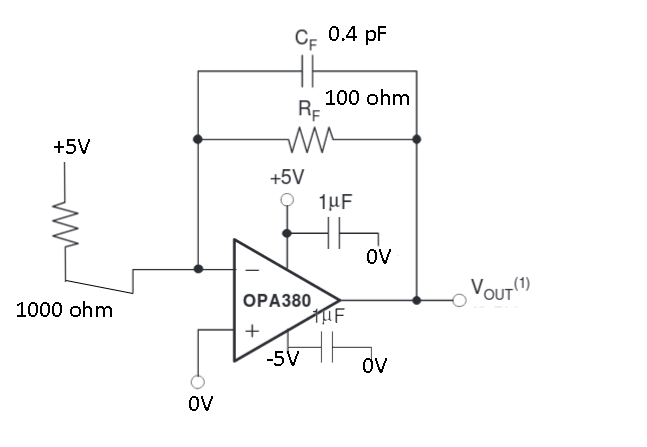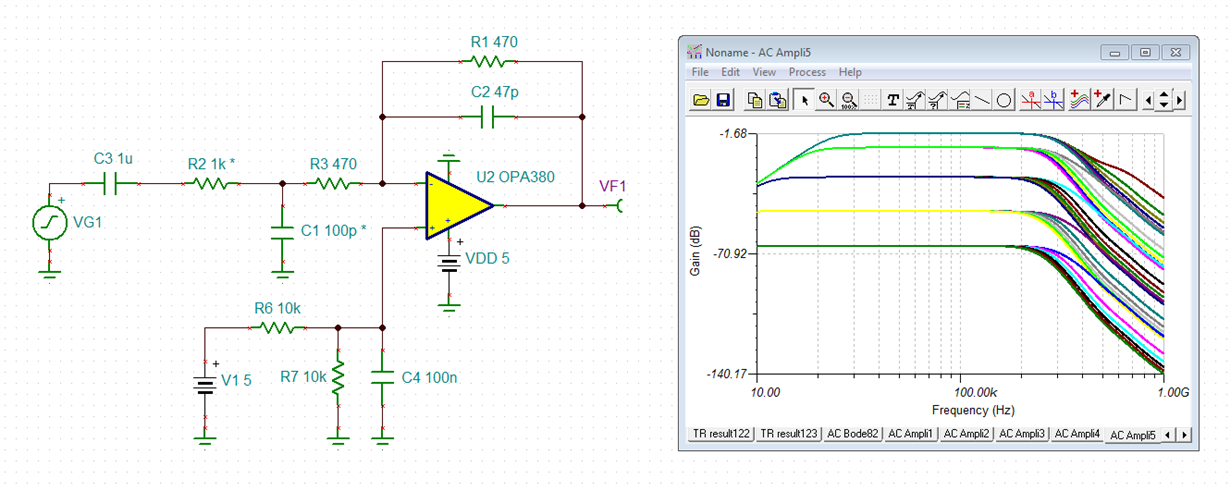I setup the circuit above with OPA380.
Is this circuit correct? If correct Vout need to be -500mV, right?
I read near by -500mV with 1000 ohM but for example if I change it with 22 ohM, I didn't get the 5V (its 20V but the upper limit is 5V) or I didn't get -50mV with 20K resistor.
Where is the problem?
This is my test setup. Later I will change the 1000 ohm resistor with 2 platin metal electrode (in salty water) and change the +5V input signal with a bipolar square wave.
I need help to understan TIA configuration, thanks.



